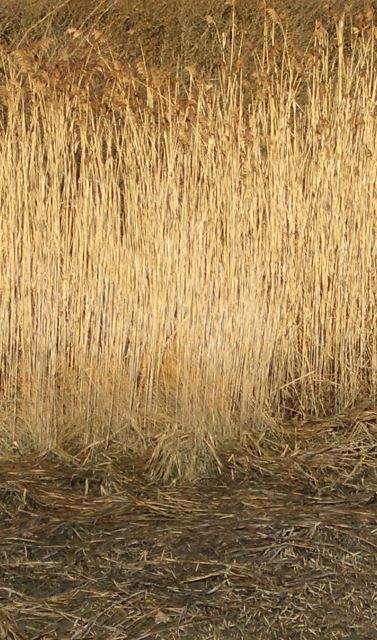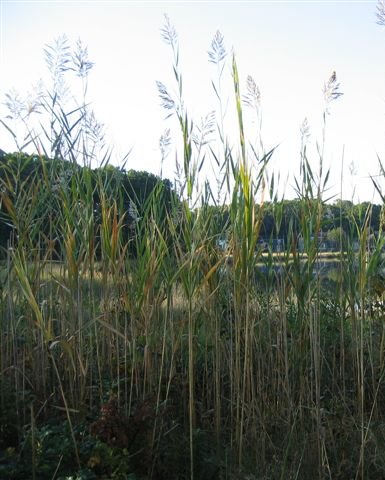Phragmites australis is a tall grass that seems able to survive almost anywhere there is fresh water available. To some people, it is quite attractive with its purple plumes atop tall waving green stems at the end of summer. That is where its positive attributes end. The native Phragmites was displaced years ago by this aggressive import. Phragmites, or Phrag as it is often called, is an invasive plant that can spread prolifically and prevent more desirable and diverse indigenous plants from growing in balance. It moves into areas that have been disturbed such as building sites, or along roads or creeks where there has been back-filling. It is often confused with Cattails or Bulrushes but its growth habits do not fit into a naturally balanced ecosystem. It spreads by rhizomes that look like PVC piping when dug up. The current year’s growth dies at the end of the season but the old stems remain standing. The following year the new growth has to grow that much taller to reach the sunlight and the stand becomes denser. Other plants cannot compete. Wildlife does not thrive in areas of a single type of vegetation. The only birds that nest in Phragmites are Red Winged Blackbirds and there is no food value in the summer plumes. Removal of Phrag to promote diversity and prevent spreading is difficult, particularly near water sources. Where it can be done, raising the saline water table is the most effective method, but that is not possible in Farm Creek. Multi-year annual mowing and treatment with Glyphosate is another DEP approved method, although Glyphosate is not an approved substance in all countries. In selected areas, where landowner permission can be obtained, ‘Friends of Farm Creek’ has opted to facilitate permissions for the landowner to cut the Phrag, or in some cases to fund and manage the cutting on a monthly schedule. This will eventually discourage the vigor of the re-growth. In the newly cleared areas, we have planted shrubs that would be found along a salt marsh. When these take hold and spread, the areas will re-establish some balance and thus provide nesting areas and food for birds. The good news is that that after comparing photos over the last seven years, no discernable spreading of Phrag has occurred to the undisturbed Farm Creek peninsular. |   |